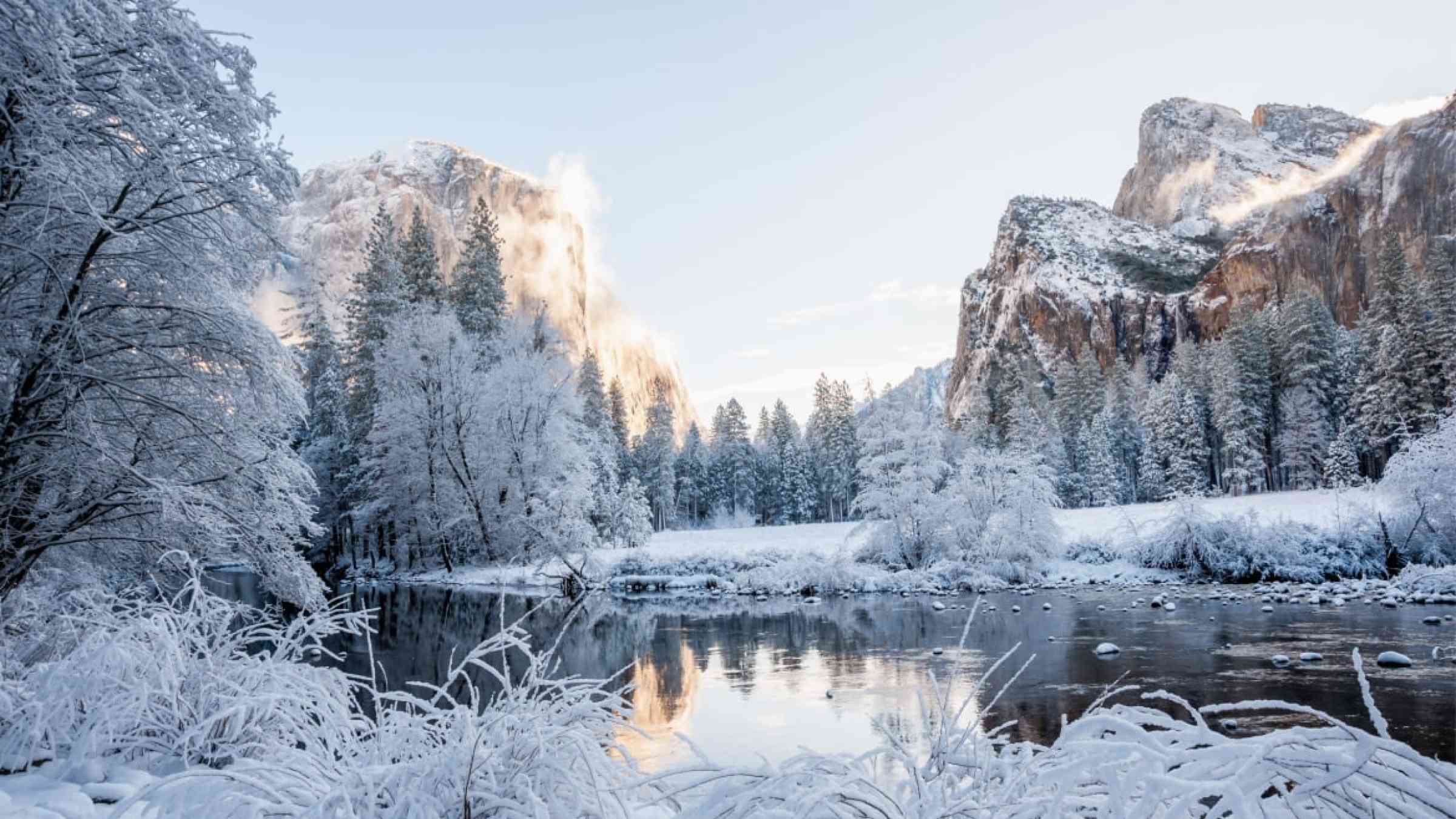Wildfires are increasingly burning California's snowy landscapes and colliding with winter droughts to shrink California's snowpack

A new study shows that midwinter dry spells lead to dramatic losses of winter snowpack in burned areas
The early pandemic years overlapped with some of California’s worst wildfires on record, creating haunting, orange-tinted skies and wide swathes of burned landscape. Some of the impacts of these fires are well known, including drastic declines in air quality, and now a new study shows how these wildfires combined with midwinter drought conditions to accelerate snowmelt.
In a study published Jan. 20 in Geophysical Research Letters, a DRI-led research team examined what happens to mountain snowpacks when sunny, midwinter dry spells occur in forests impacted by severe wildfire. The researchers found a substantial increase in wildfires burning in California’s snowy landscapes throughout 2020 and 2021, when large blazes like the Dixie, Caldor, and Creek fires concentrated in snow zones. Using a 2013 midwinter dry spell as comparison, they found that similar weather in the winter of 2021-2022 led to 50% less snow cover. The compounding impacts of wildfire on snow melt include an increase in sun exposure due to loss of forest canopy, and a reduction in the snow’s ability to reflect sunlight.
“It’s already established that wildfires are increasing spring snow melt, but we wanted to know what happens when you add a long winter dry spell on top of that,” said Arielle Koshkin, M.S., a Ph.D. student now at the Colorado School of Mines who co-led the study as part of her master’s research at DRI and the University of Nevada, Reno. “The Caldor fire burned in our backyard, it was so close to where we live and work. So, the following winter, we wanted to investigate what it looked like.”
Satellite data showed that compared to the 2001-2019 average, 2020 and 2021 saw a nearly ten-fold increase in wildfires burning in California’s seasonal snow zones. “What that implies is that there’s this increasing overlap between the fire and snow and there’s all these cascading and compounding impacts on the system and especially the hydrology,” said Ben Hatchett, Ph.D., a climatologist at DRI who co-led the study with Koshkin. “This huge increase of fire activity in California snowy regions is exactly what we expect to see more of going forward.”
A strong winter drought followed during the winter of 2021-2022, when Tahoe City experienced a 46-day long midwinter dry spell (the second-longest since reliable records began in 1917; the long-term median is 22 days without precipitation). A comparable midwinter drought following a wet start to the winter occurred in 2013, giving the researchers the ability to compare and contrast the impacts under more typical conditions with those that occurred in a severely burnt landscape.
“In 2013 and 2022, we had very similar weather patterns, but we didn’t see notable melt in 2013. And in 2022, we also did not see melt in unburned areas,” Hatchett said. “So that gives two lines of evidence suggesting that it’s the fire and not the meteorology that’s driving this.”
Forests where severe wildfires have burnt the tree canopy have more exposed snowpacks, which enhances the melting caused by sunny days and warm nights (another recent DRI study examined the snowmelt impacts of spring heatwaves). Snowmelt is further exacerbated by the loss of the snowpack’s albedo, or the natural power of white snow to reflect, rather than absorb, the sun’s radiation. Particularly in the winters immediately following a wildfire, snow is dusted with the black carbon of burnt vegetation, which can accelerate snowmelt rates by up to 57%.
The enhanced snowmelt was so pronounced within the perimeter of the Caldor fire that the researchers found a total of 50 fewer days with snow cover in the winter of 2021-2022 – the lowest number of snow cover days on record.
Following a wildfire, “there are two timescales of interest: right after the fire, the loss in albedo really dominates,” said Hatchett. “But impacts from the loss of canopy last for decades, maybe longer if the forest does not recover.”
The enhanced snowmelt midwinter creates challenges for forecasting water availability from the natural snowpack reservoir. During the winter months, water managers need to leave room in reservoirs to prevent flooding; this means that earlier snowmelt may not be captured for later use in the dry season. Studies like this provide water managers with the tools to make more accurate predictions of the timing and magnitude of snowmelt.
“The fires have made major landscape disturbance that we’re not taking into account in our forecasting abilities,” Koshkin said. “I think this study is showing that wildfire impacts are huge, and we need to implement this into our ability to understand how water runs off the landscape. It’s part of our world and it’s increasing and it’s going to affect more snowy places. So, it’s important to make sure that we understand the outcomes in our models and management plans.”
Koshkin plans to expand on this research for her Ph.D. studies by examining regional variation of fire impacts on snow. She notes that how wildfire impacts snowmelt in the Sierra Nevada may look different in Colorado or Idaho, due to different weather and snowpack conditions.
The researchers emphasize that the wildfire impacts seen in this study are the result of high-severity wildfires, and not lower-severity burns like prescribed fires. “This study really highlights the importance of bringing fire back onto our landscape in the sense that we need fire – good fire is the answer to our wildfire problem,” Hatchett says. “Bringing a more natural regime of fire, through prescribed and cultural fire, back onto our landscape will help reduce the likelihood of future severe fire.”
“We can recognize that this could be our new normal,” Koshkin said, “but we also have the ability to adapt and manage and mitigate as much as possible.”